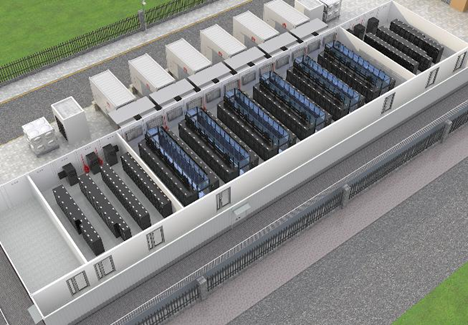Modern financial data centers are the backbone of today’s digital economy. They ensure the smooth processing of transactions and secure handling of sensitive financial data. These facilities incorporate state-of-the-art technology, ensuring they meet the highest standards for performance, security, and sustainability. This blog delves into the top five features that define modern financial data centers, shedding light on how they bolster financial institutions with advanced security and compliance measures, scalability, energy efficiency, robust disaster recovery, and cutting-edge technology integration.
Financial data centers implement multi-layered cybersecurity protocols to protect against diverse threats. These include firewalls, intrusion detection systems, and advanced encryption techniques. By employing a multi-layered approach, data centers can establish barriers that deter unauthorized access and ensure data integrity.
Adherence to strict compliance standards such as GDPR, PCI DSS, and ISO 27001 is crucial. These regulations mandate rigorous data protection measures, fostering trust among clients by ensuring that data centers handle their information following international standards. Compliance involves regular audits and updates of security practices to mitigate risks and maintain certification.
Modern financial data centers employ real-time threat detection systems to monitor network activity continuously. AI-driven analytics play a pivotal role in identifying unusual patterns and potential breaches instantly. Swift response protocols are established to contain and eliminate threats, minimizing the risk of data loss or compromise.
Modular infrastructure designs provide scalable solutions for financial data centers, enabling the seamless addition of components like servers and storage units. This incremental approach supports growing financial service demands without operational disruptions, ensuring flexibility, efficiency, and future-ready adaptability.
Financial data centers use cloud integration to deliver hybrid solutions, blending on-premises infrastructure with cloud services. This approach creates a flexible, scalable environment, enabling seamless application scaling and data storage expansion. The result is improved operational efficiency, cost savings, and enhanced adaptability to evolving business needs.
On-demand resource allocation ensures financial data centers can scale IT resources in real-time based on demand. This elasticity aids in managing peak loads efficiently, ensuring optimal performance without the need for permanent over-provisioning, thereby reducing costs and improving resource utilization.
Financial data centers rely on smart power supply systems to enhance energy efficiency. These systems dynamically manage and optimize power usage, adapting to fluctuating demands. By reducing energy consumption and operational costs, they ensure sustainable and cost-effective operations, making them essential for modern data center management.
Integrating renewable energy sources such as solar or wind power is a growing trend. Financial data centers are increasingly investing in renewable energy to decrease their carbon footprint and dependency on non-renewable energy. This shift not only supports sustainability initiatives but also offers long-term economic benefits.
Advanced cooling technologies are employed to maintain optimal temperatures within data centers. Techniques such as liquid cooling and hot/cold aisle containment ensure efficient thermal management. Cooling optimization directly impacts energy usage, significantly lowering the data center’s energy consumption and operational expenses.
Financial data centers implement automated backup solutions to safeguard data. These solutions ensure that data is regularly backed up without human intervention, reducing the risk of data loss due to manual errors and providing a means to recover data swiftly in case of a disruption.
Geographic data replication duplicates data across multiple locations, ensuring redundancy. In the event of a disaster, operations can continue seamlessly from another site. This process maintains data accessibility and consistency, safeguarding against localized failures and minimizing downtime. It’s a critical strategy for disaster recovery and business continuity.
Failover mechanisms are essential for uninterrupted operations. During hardware or network failures, these systems automatically reroute processes to backup resources, ensuring seamless continuity. This redundancy is vital for maintaining high availability, reliability, and uptime in data center services, safeguarding businesses from costly disruptions and downtime.
AI and machine learning play a significant role in modern financial data centers, providing predictive analytics for performance optimization. These technologies analyze vast amounts of data to predict and mitigate potential issues before they impact operations, enhancing efficiency and reliability.
Blockchain technology boosts security in financial data centers by leveraging its decentralized structure. It ensures data integrity, transparency, and fraud prevention, creating a secure environment for transactions. This innovation enhances trust and reliability in financial processes, making it a game-changer for modern data centers.
Edge computing reduces latency by processing data closer to its source. For financial data centers, this enables faster transaction speeds and real-time analytics, essential for high-frequency trading and time-sensitive operations. It enhances efficiency, improves decision-making, and ensures seamless performance in critical financial activities.

Financial data centers are pivotal in maintaining the efficiency and security of financial services. By incorporating advanced security measures, scalability, energy efficiency, disaster recovery, and cutting-edge technologies, these data centers support the demanding needs of the financial industry. As financial services continue to evolve, so must the infrastructure that supports them, pushing data centers to adopt ever-more sophisticated features.